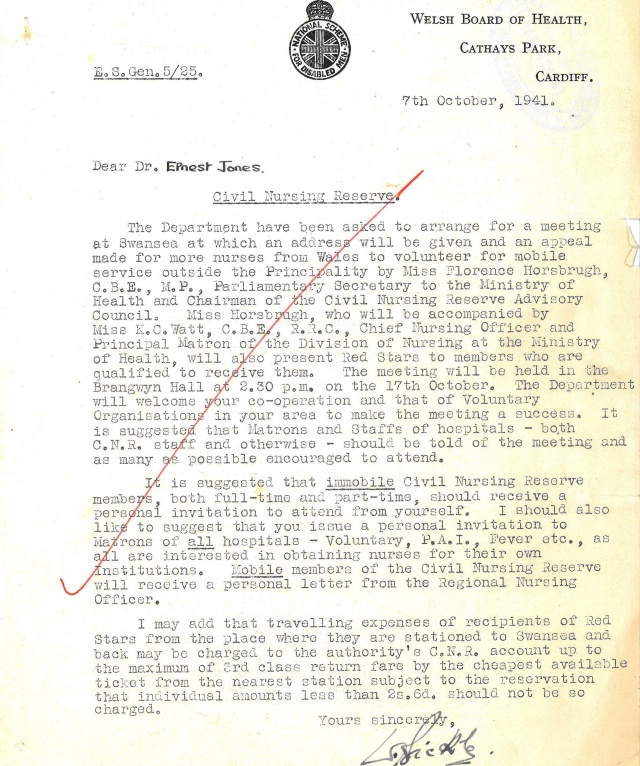In the months building up to the Second World War the Ministry of Health was required to increase the number of beds available in civilian hospitals for anticipated casualties from air raids. The Central Emergency Committee for the Nursing Profession was appointed by the Government to organise a Civil Nursing Reserve to provide the additional nursing staff required to treat civilian casualties. It was inaugurated in January 1939 and set up local committees across the country to work in conjunction with the Medical Officer of Health for the County or County Borough.
This supported the nursing work of the Voluntary Aid Detachments which were established prior to the First World War and mainly cared for wounded soldiers in military hospitals and private homes converted for the purpose.
The Civil Nursing Reserve (CNR) recruited state registered nurses, assistant nurses and nursing auxiliaries. Nursing auxiliaries could be aged between 18 and 55 with no previous experience but willing to undertake a short course of training. This scheme was supported by the British Red Cross Society and the St John Ambulance Brigade and their members were encouraged to serve in the CNR. Training for nursing auxiliaries was provided in the fields of first aid and home nursing which was followed by a short period of instruction in a hospital.
The members of the CNR were formed into teams to work in hospitals, first aid posts and reception areas for residents evacuated from dangerous areas. There was a particular need for nursing staff who were willing to be mobile and work outside their local area as required. This became increasingly necessary as the war progressed and there were appeals for more nurses to volunteer for mobile service. This also led to increased pay rates for members bringing the CNR in line with regular hospital staff.
This letter from the Welsh Board of Health encouraged members of the CNR to attend a meeting at Swansea to hear an address and appeal for more nurses from Wales to volunteer for mobile service. It also refers to the Red Stars that were awarded to nursing auxiliaries for each year of satisfactory service:
The Medical Officer of Health for Cardiganshire received a large number of letters from local women who were very keen to join the CNR, and from employers and parents writing on their behalf. Interest increased after the introduction of a second National Service Act passed by Parliament in December 1941 which widened the scope of conscription by making all married women and all childless widows between the ages of 20 and 30 liable to be called up. This age range was later extended and by mid-1943 almost 90 per cent of single women and 80 per cent of married women were employed in war work including the CNR. This letter is one example of those received by the Medical Officer of Health:
County Medical Officer of Health collection
This project is generously funded by the Wellcome Trust






Could you tell me what the rules for the CNR were with respect to married women? Were they allowed to live at home?
LikeLike